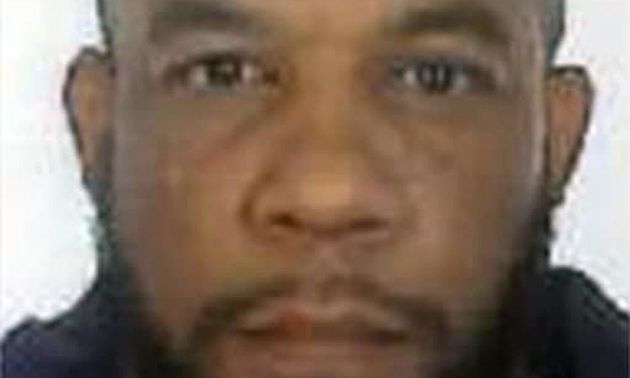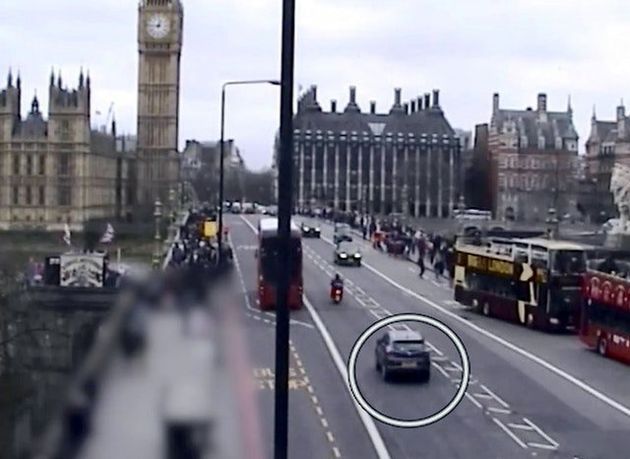
Westminster terrorist Khalid Masood was lawfully killed when he was shot dead by a minister’s bodyguard, an inquest jury has found.
The 52-year-old mowed down pedestrians on Westminster Bridge in a hired SUV, killing four and seriously injuring 29.
He crashed into railings before storming through gates near the Houses of Parliament armed with two knives.
He stabbed unarmed PC Keith Palmer to death before being shot dead by a bodyguard who rushed to the scene.
The attack on March 22 last year took just 82 seconds.

A jury of seven men and four women took two hours and 22 minutes to find that Masood was lawfully killed, adding in a short narrative of the events leading to his death.
They found that Masood was intent on inflicting “serious harm” when he stormed through the gates to the Palace of Westminster.
He had been issued with verbal warnings but “continued to move toward the close protection officers at speed” before he was shot, the jury said.
Earlier, Coroner Mark Lucraft QC had directed the jury to return a lawful killing verdict as the bodyguard who shot Masood believed it was necessary to open fire in defence of himself and others.
The inquest heard dramatic accounts of how unarmed police officers and members of the public fled after Masood killed PC Palmer and continued to advance, clutching bloodied foot-long knives, intent on targeting more officers.
His rampage was stopped by a close protection officer identified only as SA74, on site to act as bodyguard to a government minister.
The officer shot him three times with a Glock pistol after Masood continued to run forward at him, despite shouted warnings to “get back”.
SA74 gave an emotional account of how the drama unfolded, pausing during his evidence and his voice wavering as he recalled: “I was certain that something terrible was happening.”
“I saw a large black male running purposefully towards me. He was carrying two large knives and I could clearly see that they were covered in blood,” he told the Old Bailey.
“He was going to kill me.”
Jurors were shown dramatic footage of the the bodyguard and his colleague SB73 confronting the heavily built attacker, who slumped to the ground after he was shot.
Amid fears he was wearing a suicide belt, Masood was handcuffed and given first aid by the marksman and his colleague.
Masood, who had sent a “Jihadi” document moments before launching his attack, was later pronounced dead.
Sir Craig Mackey, one of the country’s most senior police officers, faced calls to resign and severe criticism on social media after he told the inquest he had stayed in his official car as Masood murdered PC Palmer.
Giving his account of events for the first time, he said that he locked the doors and remained in the vehicle with two civilian colleagues because they had no personal protective equipment or a radio.
After Masood was shot dead, Sir Craig, who is due to retire in December, tried to get out of the car but was advised by an officer on guard at the site to leave.
As acting Commissioner at the time, he also had to co-ordinate the police response to the attack.
At the time it was not known whether it was part of a wider co-ordinated attack, although investigations later confirmed Masood, who converted to Islam later in life, acted alone.

In his summing up, Lucraft QC defended Sir Craig’s actions as “sensible and proper and intended to protect others in the car”.
He said: “It is clear from the evidence of Sir Craig there was nothing he could have done to stop Masood.
“PC Palmer was under attack practically as soon as Sir Craig saw the attacker.
“None of them had any means of protecting themselves of resisting an attack, and even if he had got out of the car, it is clear from the CCTV evidence he would not have reached PC Palmer before Masood inflicted his fatal wounds.
“Sir Craig did not flee the scene.
“His first instinct was to get out in New Palace Yard, as we saw on the footage when he opened the car door.
“However, he was told by an officer to leave, and for good reason.”
During the two-week inquest, jurors were also shown graphic video of the bloodshed on Westminster Bridge, with some becoming visibly upset at the horrifying sights.
Masood’s five victims were PC Palmer, 48, American tourist Kurt Cochran, 54, retired window cleaner Leslie Rhodes, 75, mother-of-two Aysha Frade, 44, and Romanian designer Andreea Cristea, 31.
Following an earlier inquest, Lucraft concluded they were unlawfully killed by Masood.
The coroner found it was possible that PC Palmer may not have died if armed officers had been posted near the Carriage Gates.